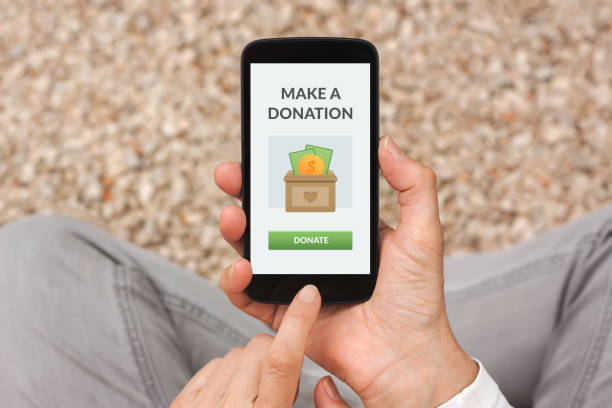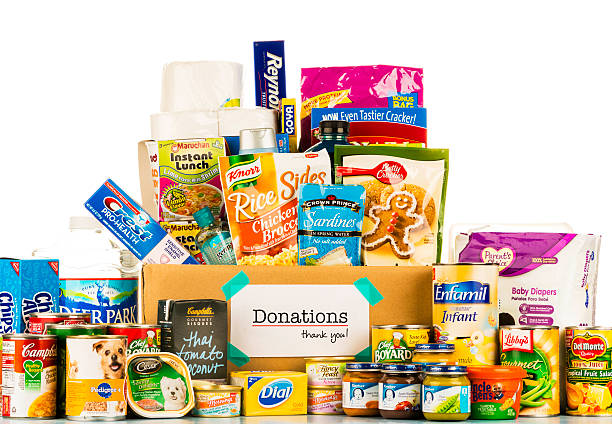Donation Box: Making a Difference One Contribution at a Time
Introduction to Donation Boxes
Donation boxes have long been a cornerstone of charitable giving, providing a simple yet powerful way for individuals to contribute to causes they care about. These boxes, often strategically placed in public areas, serve as a reminder and an invitation for people to support various charitable organizations, community projects, and humanitarian efforts. In an age where digital transactions dominate, the humble donation box still plays a crucial role in mobilizing resources for those in need.
The Evolution of Donation Boxes
Historically, donation boxes have been used by religious institutions, non-profit organizations, and community groups to collect funds for various initiatives. The concept is straightforward: place a secure box in a location with high foot traffic, and encourage passersby to drop in their spare change or cash. Over time, the design and placement of these boxes have evolved to maximize visibility and accessibility.
In recent years, the rise of digital payment methods has influenced the evolution of donation boxes. Many modern donation boxes are now equipped with technology that allows for contactless payments, making it easier for people to contribute using their credit or debit cards, or even mobile payment apps. This blend of traditional and modern approaches ensures that donation boxes remain relevant in today's fast-paced, tech-driven world.
Importance of Donation Boxes
Donation boxes offer several benefits that contribute to their continued importance in the realm of charitable giving:
- Visibility and Awareness: By placing donation boxes in strategic locations, organizations can raise awareness about their cause. Every passerby who sees the box is reminded of the organization's mission and may be inspired to learn more or make a contribution.
- Convenience: Donation boxes provide a convenient way for people to give. Whether it's spare change or a larger contribution, the act of donating is made simple and immediate.
- Accessibility: Not everyone has access to digital payment methods. Donation boxes offer an inclusive way for everyone, regardless of their financial situation or technological access, to contribute to a cause.
- Impulse Giving: The presence of a donation box can trigger impulse giving. Someone who may not have planned to donate might be moved to contribute when they see a box supporting a cause they care about.
Designing an Effective Donation Box
The design of a donation box plays a crucial role in its effectiveness. A well-designed box should be secure, easy to use, and visually appealing. Here are some key considerations for designing an effective donation box:
- Security: Ensuring the safety of the collected funds is paramount. Donation boxes should be made of sturdy materials and have secure locks to prevent theft.
- Visibility: The box should be placed in a prominent location where it will be seen by as many people as possible. Adding bright colors, clear signage, and eye-catching graphics can help attract attention.
- Ease of Use: The slot for inserting donations should be easily accessible and wide enough to accommodate various denominations of cash and coins. For boxes equipped with digital payment options, the technology should be user-friendly and reliable.
- Information: Including information about the organization and its cause on the donation box can help educate potential donors. This might include a brief mission statement, a description of how the funds will be used, and contact information for those who want to learn more.
Placement Strategies for Donation Boxes
Where a donation box is placed can significantly impact the amount of funds it collects. Here are some effective placement strategies:
- High Foot Traffic Areas: Placing donation boxes in areas with high foot traffic, such as shopping malls, airports, train stations, and busy streets, can increase the likelihood of donations.
- Community Centers: Locations like community centers, libraries, and recreational facilities are ideal for donation boxes, as they are frequented by individuals who are often engaged in community activities and may be more inclined to give.
- Retail Locations: Partnering with retail stores to place donation boxes at checkout counters can be highly effective. Customers may be willing to donate their spare change after making a purchase.
- Events and Festivals: Charity events, festivals, and fairs provide excellent opportunities for placing donation boxes. Attendees are often in a generous mood and may be more likely to contribute to a cause.
- Religious Institutions: Churches, temples, mosques, and other religious institutions have a long history of using donation boxes to collect funds for charitable purposes. These locations often have a captive audience that is motivated to give.
Case Studies: Successful Donation Box Campaigns
Several organizations have demonstrated the effectiveness of donation boxes through successful campaigns. One notable example is the Ronald McDonald House Charities (RMHC), which places donation boxes at McDonald's restaurants worldwide. These boxes collect millions of dollars each year, supporting families with seriously ill children. The visibility and convenience of these donation boxes, combined with the widespread presence of McDonald's locations, make them incredibly effective.
Another example is the Salvation Army's Red Kettle Campaign. During the holiday season, volunteers stand outside shopping centers and other busy locations, ringing bells and encouraging passersby to donate to the red kettles. This campaign not only raises substantial funds but also increases awareness of the Salvation Army's work.
The Future of Donation Boxes
As technology continues to advance, the future of donation boxes looks promising. The integration of digital payment options has already begun to transform how people donate. Contactless payment methods, QR codes, and mobile payment apps make it easier than ever for individuals to contribute on the go.
Additionally, the use of data analytics can help organizations optimize the placement and design of their donation boxes. By analyzing patterns in donations, organizations can identify the most effective locations and strategies for their boxes.
Conclusion
Donation boxes remain a vital tool for charitable organizations, providing a simple and effective way to collect funds and raise awareness. Despite the rise of digital payment methods, the traditional donation box continues to play an important role in mobilizing resources for those in need. By leveraging both traditional and modern approaches, organizations can maximize the impact of their donation boxes and continue to make a difference in their communities and beyond.
In conclusion, whether through physical cash or digital transactions, the essence of giving remains the same. Donation boxes, in their evolving forms, symbolize the spirit of generosity and community support that is crucial for driving positive change. As long as there are causes that need funding and people willing to contribute, donation boxes will continue to be a cornerstone of charitable giving.




